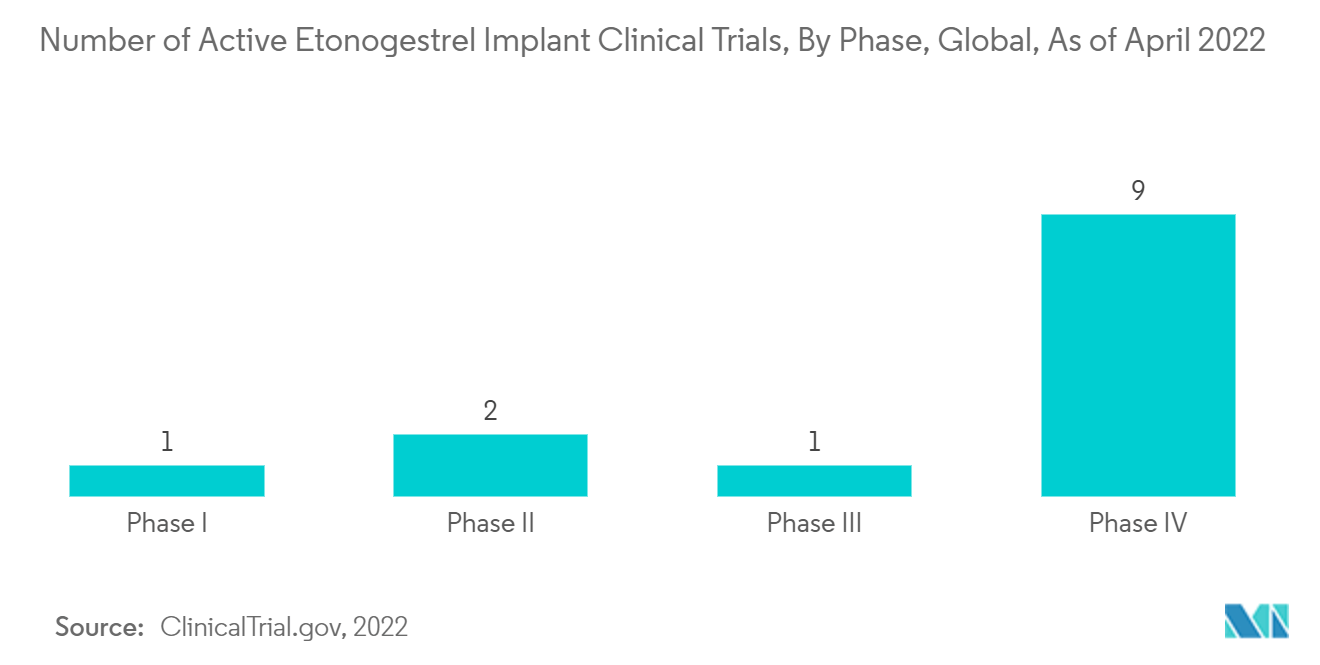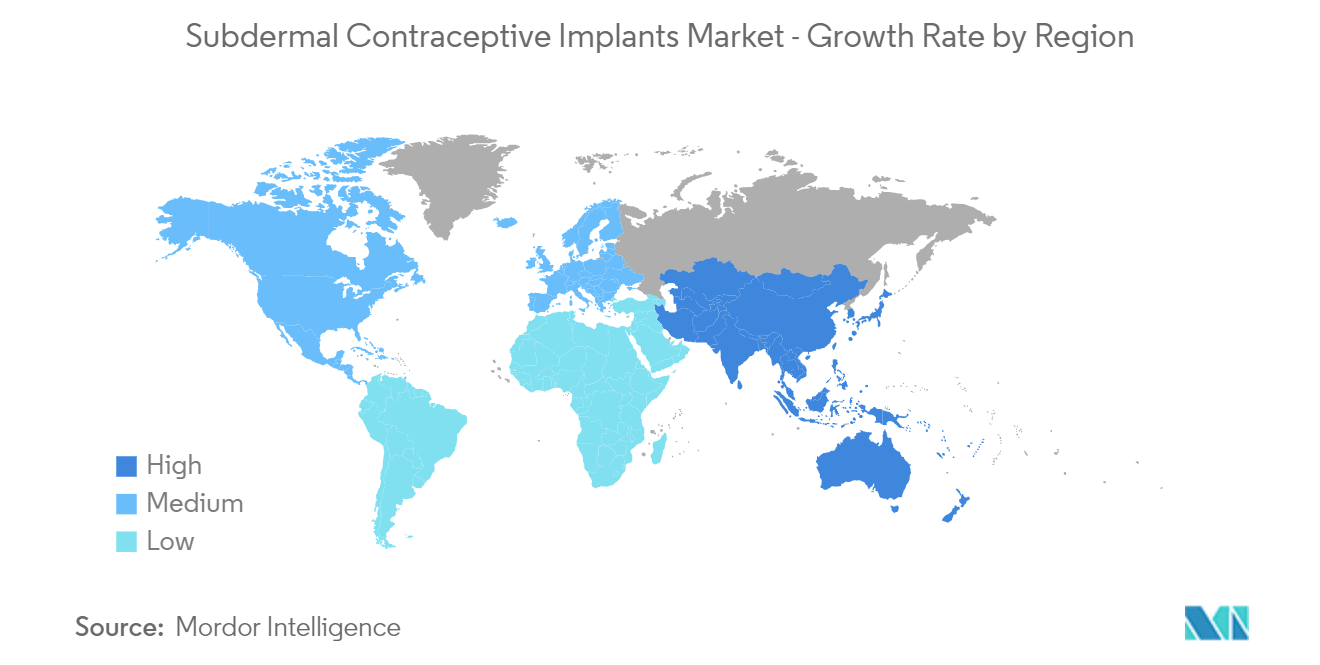Market Trends of Subdermal Contraceptive Implants Industry
Etonogestrel Implant Segment is Expected to Witness Considerable Growth Over the Forecast Period
- The etonogestrel implant segment is expected to witness significant growth over a forecast period owing to factors such as high clinical effectiveness and high adoption rate. Etonogestrel is a hormone that prevents ovulation. This medication also causes changes in the cervical mucus and uterine lining, making it harder for sperm to reach the uterus and harder for a fertilized egg to attach to the uterus.
- Subdermal etonogestrel implant is used as contraception to prevent pregnancy. The medicine is contained in a small plastic rod that is implanted under the skin of the upper arm. The medicine is released slowly into the body. The rod can remain in place and provide continuous contraception for up to 3 years.
- The increasing company focus on adopting various business strategies such as product launches, listing products in the countries, mergers, and company spin-offs are likely to boost the growth of the market over the forecast period. For instance, in June 2021, Merck spun off Organon to make it an independent Women's Health company. The company will operate in women's healthcare with a portfolio of contraceptive and fertility brands, dermatology, respiratory, and bone health products. In addition, in January 2022, Organon announced the public listings for NEXPLANON (etonogestrel extended-release subdermal implant) in Ontario (Ontario Drug Benefit Program), British Columbia (BC PharmaCare), and Nova Scotia (Nova Scotia PharmaCare).
- Similarly, in November 2021, Organon announced the public listings for NEXPLANON (etonogestrel extended-release subdermal implant) in Quebec under the Régie de l'assurance Maladie du Québec (RAMQ). Thus, the increasing approvals and product launches are likely to increase the demand for etonogestrel implants. Therefore, considerable segment growth is anticipated over the forecast period.

North America is Expected to Maintain Dominance during the Forecast Period
- North America is expected to witness considerable growth over the forecast period. The growth is due to factors such as rising cases of unwanted pregnancies and high abortion rates, technological advancements, as well as supportive government schemes. For instance, according to the Guttmacher Institute, in March 2022, there were more than 5,660,000 pregnancies annually between 2020 and 2022, of which 2,590,000 were unwanted, and 886,000 resulted in abortion in North America.
- Furthermore, as per the same source, in Canada, there were more than 570,000 pregnancies annually between 2020 and 2022, of which 265,000 were unwanted, and 97,500 resulted in abortion. Thus, the increasing cases of unwanted pregnancies and abortion rates are likely to increase the demand for subdermal contraceptive implants, thereby increasing market growth in the North American region.
- Key product launches, high concentration of market players or manufacturers' presence, acquisition and & partnerships among major players, and rising initiatives towards contraceptive technologies in the United States are some of the factors driving the growth of the subdermal contraceptive implants market in the country.
- For instance, as per the Bill & Melinda Gates Foundation data published in 2022, the foundation is aiming to offer USD 280.0 million per year from 2021 to 2030 for developing new and improved contraceptive technologies, support family planning programs that reflect the preferences of local communities, and enable women and girls to be in control of their contraceptive care. Thus, the rising incidences of unwanted pregnancies and abortion rates and the aforementioned developments are anticipated to boost the adoption of subdermal contraceptive implants in the country, thereby boosting market growth over the forecast period.


